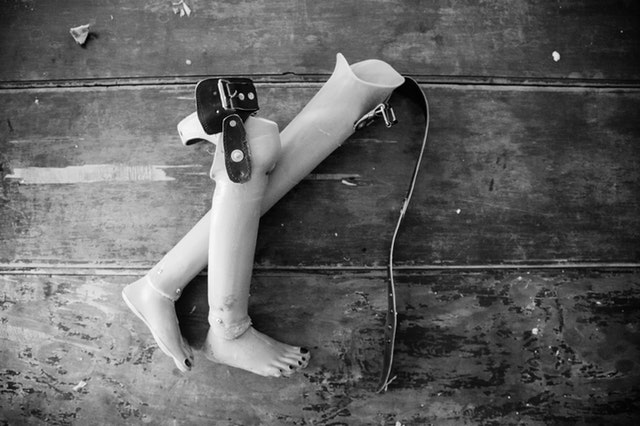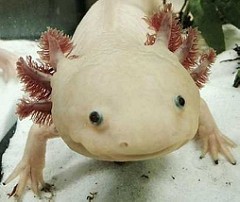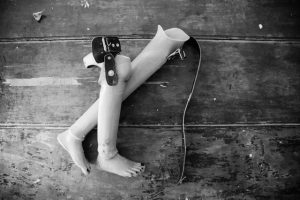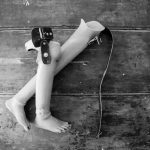
Regeneration in humans is limited. If only we know the switch that could amplify our regeneration capacity then we wouldn’t have to worry much about losing a body part. [Photo credit: Pete Johnson, Pexels]
Table of Contents
Regeneration in humans is much more limited compared in other animals. Say for instance when one lost a limb, much as well say goodbye to it for the rest of one’s life. Perhaps, it would be nice if we have a higher capacity to regenerate many of our indispensable body parts, like head, limbs, and many other “regeneration-incapables”. Then probably, we might not have to worry much about losing any of them knowing that they will eventually re-grow in due time.
Regeneration vs. Healing
Humans have the capacity to regenerate. However, we have a very limited capability to restoring parts of our skin, hair, nails, fingertips, and liver. At the tissue level, surely we have dedicated cells to replace lost and damaged cells. For instance, our non-injured bone eventually replenishes into a full new bone but in a span of ten years. Our skin naturally renews but give it two weeks. The story swerves differently though in the case of an injury.
Rather than expending energy into having it replaced with a new one, our body directs its efforts into healing it. So when our skin is deeply damaged, our body fixes it with a scar. Tissue repair mechanisms such as wound healing aren’t really a snag. They forestall pathogenic microbes from using an injured body part as an easy gateway into our body. (Besides, we do have ample microbiota naturally thriving inside of us already) The main goal is to fix it efficaciously, with relatively less effort.
Natural regeneration in humans
In humans, the only tissue that regenerates naturally, consistently, and completely is the endometrium.1 After it slough-offs during a woman’s menstrual period, it grows back by re-epithelialization until the next period. Humans can also regenerate an injured liver provided that the restoration involves as little as 25% of the original liver mass. The liver can grow back to its original size but may not to its original shape. Damaged tubular parts of the kidney can also re-grow. The surviving epithelial cells undergo migration, dedifferentiation, proliferation, and re-differentiation to set a new epithelial lining of the tubule.
Animals with higher regeneration capacities
Axolotl (Ambystoma mexicanum) is one of the animals dubbed as masters of regeneration. It can grow back its limbs, even a heart, without a scar. [Photo credit: Mike Licht, Flickr]
Some animals have a higher capacity to re-grow lost body parts. Sharks, skates, and rays can regenerate their kidneys. They can regrow an entire nephron, which humans cannot. A lizard would drop its tail as a mode of escape; its tail will be fully restored over time anyway. Sharks do not have qualms about losing teeth. They can replace any of them more than a hundred times in their lifetime. Axolotl can replace its broken heart. A starfish will once again be stellar upon the return of a lost arm. In fact, even its lost arm can fully regenerate into an entire starfish as long as the central nerve ring remains intact.2 A decapitated planarian worm needs not to worry about losing its head; it can grow back, together with its brain, including the memories.2 Without a doubt, many of these animals are simply masters of their craft – regeneration.
Regeneration genes
Researchers from Harvard University published their new findings on the whole-body regeneration capacity of the three-banded panther worm.3 They uncovered DNA switches that seemed to regulate genes that have a role in the regeneration process. Accordingly, they found a section of a non-coding DNA that controlled the activation of a master gene in which they called the “early growth response” (EGR) gene. When active, the EGR gene seemed like a power switch that turns on and off certain genes in the coding region during regeneration. On the contrary, when deactivated, no regeneration occurred.
Surprisingly, humans have EGR gene, too. So why doesn’t it lead to greater regeneration capacities as it does in the three-banded panther worm? The researchers explained that while it works in the worm, it doesn’t work the same way in humans. The wiring may be different. The worm’s EGR gene may have germane connections that are absent in humans.
Switching the gene on
Induced regeneration in humans is one of the goals of regenerative medicine. This field of medicine seeks new ways to give our regenerative capacity a boost. One of the ways is to look “molecularly”. Researchers are looking into the gene “Lin28a“. When active, this gene can reprogram somatic cells into embryonic-like stem cells. Accordingly, it has a role in tissue regeneration and recovery. However, the gene is naturally turned off in adults. Research in boosting our regenerative capacities is ongoing. Switching our organs from being regeneration-incapable to regeneration-capable may just be a matter of discovering the gene switch that could enhance the regeneration capacity of humans.
— written by Maria Victoria Gonzaga
References
1 Min, S., Wang, S. W., & Orr, W. (2006). “Graphic general pathology: 2.2 complete regeneration”. Pathology. pathol.med.stu.edu.cn. Retrieved from [Link]
2 Langley, L. (2013, August 28). “Pictures: 5 Animals That Regrow Body Parts”. National Geographic News. Retrieved from [Link]


